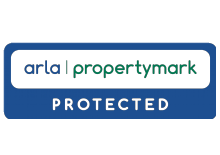How do I manage damp, mould, and condensation?
- Posted On: 1 Oct 2021
If you notice any excess moisture in your property, or any patches of mould forming, we can help you with some handy hints and tips for managing this.
Condensation
Condensation appears when excess moisture in the air meets a cold surface, such as a window or cold wall. Condensation and mould can form more easily as the weather turns colder and can build up within a property and create problems such as water dripping down and mould appearing on walls and ceilings. Most commonly you notice small black marks/mould on the walls or window.
Managing condensation is not a result of a defect with the property itself and can only be resolved by changing the way you use the property.
There is always some moisture in the air, even if you cannot see it. If air gets cold, it cannot hold all the moisture produced by everyday activities and some of this moisture appears as tiny droplets of water (condensation), most noticeable on:
- Windows on a cold morning
- In bathrooms
- Kitchens after cooking
- Walls where furniture or large items have been pushed up against the wall preventing the circulation of air.
- Mirrors when you have a bath or shower.
- Cold surfaces such as tiles or cold (exterior) walls and ceilings.
Our everyday activities add extra moisture to the air inside our homes. Even our breathing adds some moisture. One person asleep adds half a pint of water to the air overnight and at twice that rate when active during the day!
If you have already noticed damage to the property caused by condensation, first please treat any mould and report immediately.
Please note condensation and damp are two different issues. If you can see a visibly wet line or tidemark in the property, please contact us to enable us to advise your Landlord that a contractor is required to asses any potential water ingress issues.
Penetrating damp is caused by water coming through the external walls or the roof or when there is an internal leak or plumbing problem.
Rising damp happens in basements and ground floor and comes from ground water being soaked up from the bricks.
When you first report damp or mould to us we will arrange an inspection of the property to locate any issues that may be causing the damp and mould.
At this visit we will ensure any mould is cleaned off. A good cleaning regime for treating mould is essential, we can attend once a week if required until the issue is resolved. Or to allow quiet enjoyment of the property you can clean any new mould you see with a mould solution. You should use whatever you're happy with and always read the instructions (remember if the product contains bleach to avoid contact with any clothes or furnishings).
To kill and remove mould, wipe down or spray walls and window frames with a fungicidal wash or very diluted bleach. Ensure that you follow instructions for its safe use. These fungicidal washes are also available at local supermarkets on the cleaning isle or DIY stores and will last at least a year. Even when you put all the practical precautions into place you may still find condensation and mould forms, so whenever you notice a black spot of mould wipe it down with the anti-fungicidal spray. The spray is intended to be used regularly hence why there are 100s of application available in one bottle.
It is your responsibility to ensure
- your home is ventilated and that you heat the property so that moisture doesn’t build up. Here’s a list of what else you need to do limit the amount of moisture for the duration of your time at the property.
- Use extractor fans in the kitchen and bathroom.
- Close internal doors when you cook or shower.
- Wipe down bathroom tiles and shower screens after use.
- Leave a gap between furniture and external walls.
- Open blinds and curtains in the day and open the windows in the property for 5-10 minutes when you get up. If the windows have condensation on them, you should open a window or wipe off the water with a cloth.
- Dry clothes on airers in well ventilated rooms. Never hang clothes on the radiators. If you do dry clothes in the property, please ensure a window is kept open at all times, or use a dehumidifier at the same time to collect the water released from the clothes.
- Where possible open the windows in the property at some point in the day to allow fresh air to circulate. Most windows can be left in a lockable, draft position whilst you are not in the property. If your windows have a sliding vent system, please ensure the vents are left open at all times.
- Use the heating as required throughout the day. Avoid letting the property get too cold.
- Keep internal doors open when not in the property to ensure free circulation of air (unless you have fire doors, they should be kept shut at all times)
We will always work with your Landlord to resolve any issues related to damp and mould as quickly as possible within a reasonable time scale.
Following our investigations, there might not be any work required, and we will talk to you in more detail about how to manage moisture levels in the property to avoid condensation and mould forming. On occasion your Landlord or Cloud will bring a dehumidifier to the property to help with moisture levels as a temporary measure until remedial works are completed.
Dehumidifiers
Dehumidifiers are a great temporary solution to help tackle condensation and damp. They pull moisture from the air, collecting water in a removable tank. There are different sizes and models of dehumidifier, and if you need help with a specific model just get in touch!
How to use a dehumidifier:
Set the humidity level – the ideal level is between 30-50% humidity. The standard setting for most dehumidifiers is 40% so if yours doesn’t have this control, 40% will be the default setting.
Pick the right spot – They should be positioned to allow a flow of air around the machine, so make sure it’s not against a wall and leave a gap of at least 20cm.
Close windows and doors – If the damp or condensation problem is in just one room, the dehumidifier will work more efficiently if you close the doors and windows while it is running. Leaving windows open will make the dehumidifier work harder to draw moisture from a larger area.
Empty the tank regularly – There is a built-in automatic shut off when the water level gets too high, so make sure you empty the tank at least once a day.
Keep it clean – Keep the machine free of dust. If it has removable filters these need to be cleaned once a month using a vacuum.
When to use:
Dehumidifiers are very energy efficient and are relatively low cost to run so you can use them for up to 12 hours a day without worrying about it affecting your energy allowance. If you are concerned about the extra energy usage you can keep a log of how many hours it has been in use, for consideration if you go over your annual allowance.
Alternatives to dehumidifiers
Hanging wardrobe moisture catchers can be used to dry out clothes in wardrobes that have been against a moist wall. They have moisture absorbing pellets in them and can be disposed of after use.
Mini windowsill disposable moisture catchers are great for collecting excess moisture from windows that have a lot of condensation when you’re not home to regularly wipe down. These can be purchased from Amazon.
If you are in one of our residential properties and are struggling with energy costs you can find advice and support at: Ofgem
There is a Priority Services Register to provide extra help to those in vulnerable situations: ofgem.gov.uk/get-help-your-supplier-priorityservices-register
Information about Cost of Living Payments can be found at: gov.uk/guidance/cost-of-living-payment
Grants of between £5,000 and £25,000 are available to eligible low income private tenants as part of the Warmer Homes programme: warmerhomes.org.uk/eligibility
If you have any questions at all or are unsure of the action required, please do not hesitate to contact a member of the team and we will be more than happy to help you.






